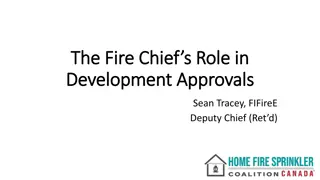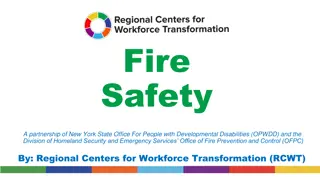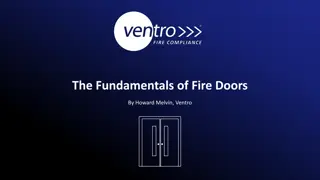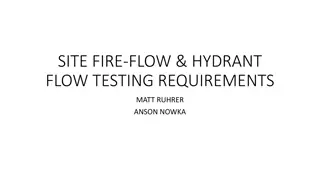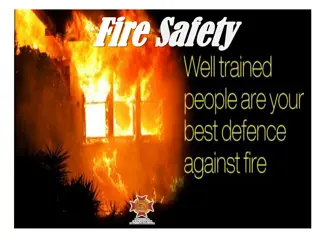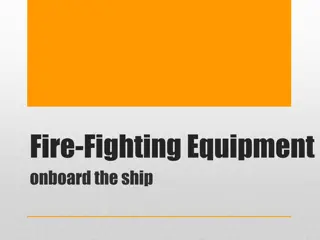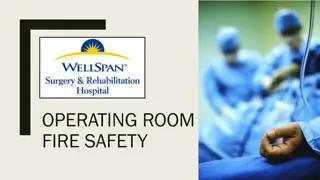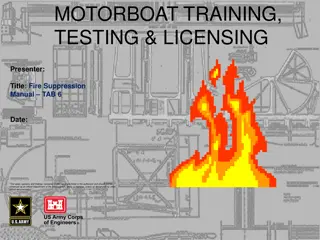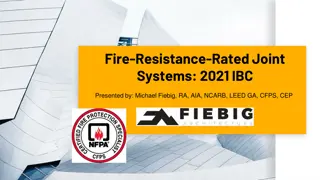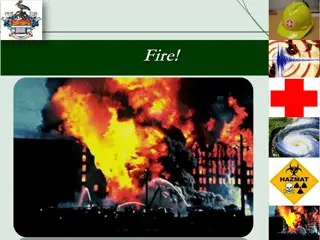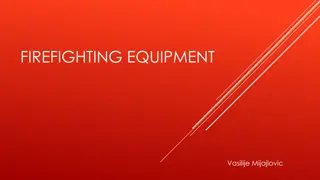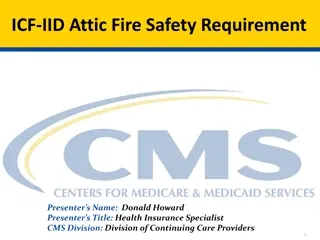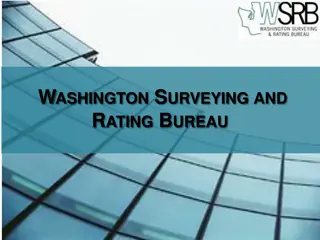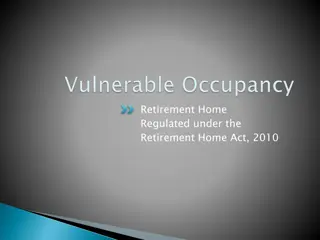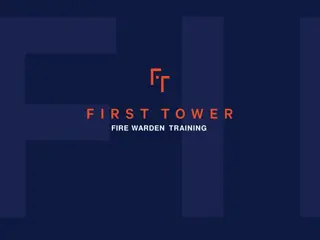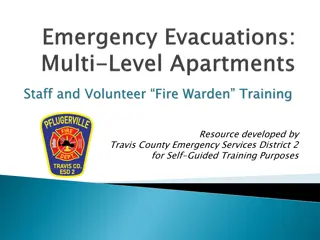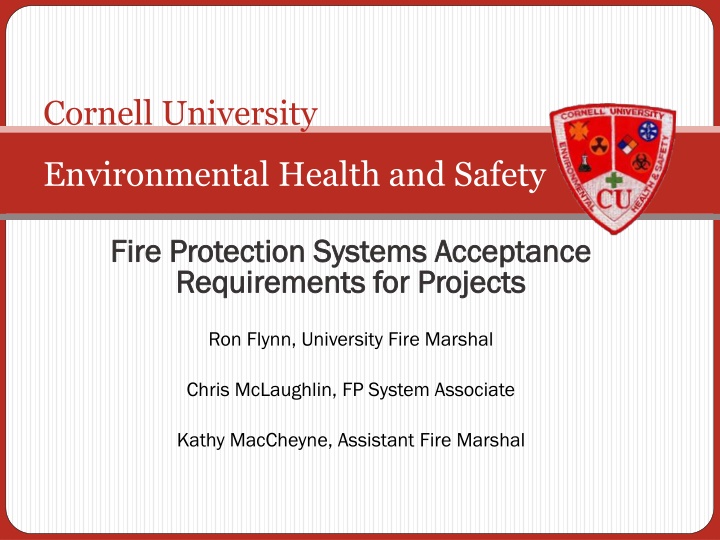
Cornell University Fire Protection Systems Acceptance Requirements
This document outlines the acceptance requirements for fire protection systems at Cornell University to ensure compliance with codes and standards. It covers system shutdowns, impairments, and procedures for addressing various levels of impairments, emphasizing safety and protocols.
Download Presentation

Please find below an Image/Link to download the presentation.
The content on the website is provided AS IS for your information and personal use only. It may not be sold, licensed, or shared on other websites without obtaining consent from the author. If you encounter any issues during the download, it is possible that the publisher has removed the file from their server.
You are allowed to download the files provided on this website for personal or commercial use, subject to the condition that they are used lawfully. All files are the property of their respective owners.
The content on the website is provided AS IS for your information and personal use only. It may not be sold, licensed, or shared on other websites without obtaining consent from the author.
E N D
Presentation Transcript
Cornell University Environmental Health and Safety Fire Protection Systems Acceptance Fire Protection Systems Acceptance Requirements for Projects Requirements for Projects Ron Flynn, University Fire Marshal Chris McLaughlin, FP System Associate Kathy MacCheyne, Assistant Fire Marshal
Objective To assure Cornell University has adequate fire protection and life safety systems that comply with applicable codes and standards
Where does it start? Where does it start? Plan Review; NYS Codes NFPA Standards as referenced by applicable codes CU Design Standards
Fire Protection System Shutdowns and Impairments Shutdowns: as needed for work in an affected area must be requested from Customer Service 48 Hrs in advance. Contractors are not allowed to remove, tape over, bag or otherwise disable detection or sprinkler coverage. Impairments Fire Code of NYS Section 901.7 Fire Code of NYS Section 901.7 An Impairment: the disabling of fire alarm devices or sprinkler system coverage in a building
Fire Protection System Impairments, continued Simple/ Simple/Partial Impairment Partial Impairment is the disabling of fire alarm devices or sprinkler system coverage in the immediate area of where work is to be performed We will not allow the impairment of both the fire alarm system and sprinkler system to occur at the same time a. Requires a Shutdown request to Customer Service 48 Hrs in advance b. No Fire Watch will be required in most cases
Fire Protection System Impairments, continued Full System Impairment Full System Impairment is the disabling of a Full Fire Protection System (Sprinkler, Fire Alarm, Standpipe, FDC, Fire Pump, etc). OR Disabling a large portion of a fire protection system (multiple floors or a large area.) We will not allow the impairment of both the fire alarm system and sprinkler system to occur at the same time
Fire Protection System Impairments, continued Requirements for a full Impairment Requirements for a full Impairment 1. Fire Watch will be required (EH&S does not perform the fire watch, it is the responsibility of the contractor) 2. Impairment notice will be sent by EHS to various agencies as required by code Must Provide the following information to EHS minimum of48 Hrs in advance (kem9@cornell.edu) -Contractor name and cell number who is doing the work -Area of fire protection impacted and time frame -Dedicated fire watcher name and number **Can have NO other responsibilities other than fire watch Requires a Shutdown request to Customer Service 48 Hrs in advance 3. **When in doubt: contact EHS a minimum of 48 hrs in advance 4.
Fire Protection Coverage during Renovations Where areas to be renovated are already protected by a fire protection system, continuous coverage of that area must be maintained throughout the project This can be accomplished by; Maintaining existing sprinkler coverage (Daily shutdowns are acceptable) Installing temporary heat detection (Conduit not required, red fire alarm cable okay) Level of temporary protection will be determined by the AHJ
Fire Safety During Construction Fire Safety During Construction Fire Code of NYS Chapter Fire Code of NYS Chapter - -33 and NFPA - -Outlines the minimum safeguards for construction projects to provide reasonable safety to life and property from fire during such operations 33 and NFPA- -241 241
Fire Safety During Construction, continued Fire Safety During Construction Hot Work Activities Fire Code of NYS Chapter Fire Code of NYS Chapter- -35 -Definition; Welding, cutting, open torches and other hot work operations and equipment 35 -Permit(s); Contractors need to obtain a Hot Work Permit from the respective AHJ
What is required to be tested? What is required to be tested? Fire Alarm system (including program review) Sprinkler system (wet, dry, foam, and pre-action) Standpipe system (manual and automatic) Fire Pump Alternative Fire Suppression Systems (Gas, Kitchen hood) Opening Protective (fire doors, fire shutters, etc.) HVAC Interface (dampers, fan shutdown, atrium smoke exhaust, etc.)
How to schedule acceptance tests All scheduling of tests to go through EH&S (Chris McLaughlin/Kathy MacCheyne). - EH&S will contact the appropriate AHJ and set up time and date. All acceptance test; - should be scheduled in advance of the project end date - should not be scheduled until contractor has done all pre-testing of systems to lessen project impact
How to schedule acceptance tests, continued Proper scheduling and pre-testing is essential for timely completion of projects due to multiple projects and limited testing resources Failure of device or system operation during final acceptance may result in termination of the test
Acceptance Test Forms, continued Unless pre-approved, contractors in house paperwork will not be accepted EH&S can provide the project manager with the appropriate forms needed for acceptance testing. All required forms will need to be submitted to EH&S before final acceptance letter is issued. .
Acceptance Test Documentation Once Acceptance Test has been done, EH&S will distribute a Testing Letter listing the results of the test with any deficiencies as well as the completed standardized forms from the contractor to the following; Project Manager Construction Manager AHJ
Acceptance Test Documentation, continued Final letter of acceptance will not be provided until all deficiencies have been corrected and verified by EH&S Test results will not be provided to the contractors by EH&S unless authorized by Cornell Construction or Project Manager
NFPA 80 Standard for Fire Doors and Other Opening Protectives Requirements to be verified - Gaps around doors - Visible inspection (including holes, labeling, field modifications, etc.) - Closure operation (including hold open devices) - Proper latching of door - Coordinator All labeled doors must meet these requirements whether they are required by code or not
EHS Fire Marshals Group Responsibilities Plan Review: Primary Contact: Chris McLaughlin Backup: Kathy MacCheyne Impairments : Primary: Kathy MacCheyne Backup: Ron Flynn Acceptance Testing: Primary: Chris McLaughlin Backup: Kathy MacCheyne Fire Safety during Construction: Primary: Ron Flynn Backup: Kathy MacCheyne
Summary Plan Review Pre-planning for impairments, shutdowns and fire watch Fire Protection Coverage During Renovations Fire Safety During Construction Acceptance Testing Acceptance Testing Documentation
Questions? Ron Flynn (rmf9@cornell.edu) Chris McLaughlin (cjm358@cornell.edu) Kathy MacCheyne (kem9@cornell.edu) www.ehs.cornell.edu

